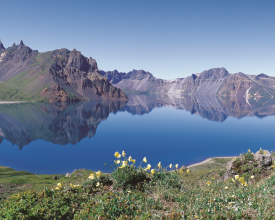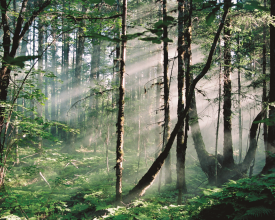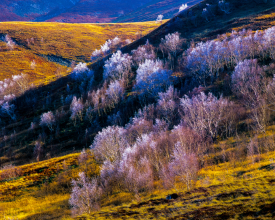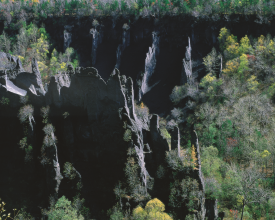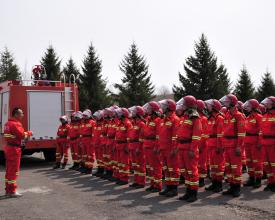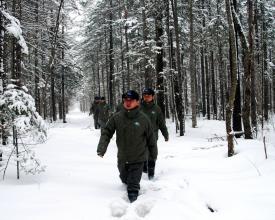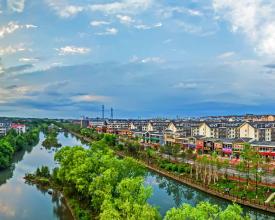
Ecological Conservation and Sustainable Development of Changbai Mountain
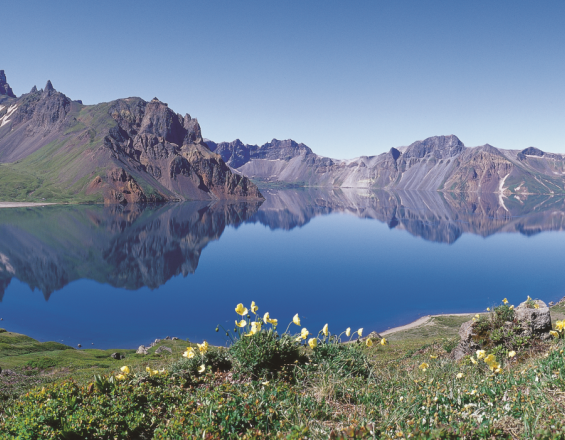
Changbai Mountain Nature Reserve contains the temperate mountainous forest ecosystem that is the most typical and best preserved in the same latitudes on the planet and also the most representative natural complex in the northern half of the Eurasia. It is a comprehensive nature reserve that integrates multiple functions of ecological protection, water conservation, public education, scientific research, ecotourism, and international exchanges and cooperation, and praised as the Ecological Lung of Northeast China. It is not only a hotspot for China’s biodiversity research, but also holds a very important position with its high ecological value in the global conservation field. In order to advance both conservation and development, Changbai Mountain actively explores a path that develops urban areas as scenic areas while protecting the ecological environment and seeks to promote the harmonious coexistence between man and nature.
Context
Challenges addressed
- Environmentally: the increased number of tourists during the peak season increased the risks of forest fires and ecological damage;
- Economically: Before restricting the number of people entering the scenic area, most tourists would leave the area directly after the day’s visit. This to a certain extent had hindered the development of accommodation and catering businesses in the surrounding communities of the scenic area. As a result, the income of the local residents was not stable, nor was the local economic development balanced;
- Socially: Before building a neighbouring town into a new scenic area just outside Changbai Mountain Scenic Area, the infrastructures and the publicity efforts in the surrounding communities were poor. The adverse effects also increased, such as automobile exhaust, pollutants, and more negative feedback from tourists about poor visiting experiences.
Location
Process
Summary of the process
- Thanks to the sound Reserve’s Master Plan, construction projects related to nature conservation, forest fire prevention, eco-tourism, public education and community development are well-planned and implemented accordingly;
- A good ecological environment is the foundation for development. Solid work in forest fire prevention and nature conservation is the core for sustainable development. Only by ensuring ecological safety can development be pursued in a healthy, harmonious and long-term manner;
- In order to reduce the pressures brought by too many tourists on the ecological carrying capacity and drive the socio-economic development of the local communities, great efforts were made to innovate and create a new ecotourism model, and to implement the new ideas of sustainable development that promotes an integrated development of the urban and the scenic areas and the internationalisation of the scenic area. Scientific planning and designs and vigorous ecological protection are combined to eventually realise a sustainable green development.
Building Blocks
To create a model of integrated development of the scenic and the urban areas and raise local communities’ living standards
Thorough data analysis was conducted on recent years' tourism in Changbaishan, and the ecological carrying capacity of Changbai Scenic Area was hence determined based on science. A scientific and sound tourism plan was formulated based on statistics. Securing sufficient funding ensured the implementation of the planned projects. A number of mechanisms and measures are put in place to ensure an accurate calculation of the number of visitors of the day and a forecast in the following 3 days, such as merging the two ticket-checking points, real-name ticketing, ticket-booking based on the selected time of entry. When the crux comes, such measures as ceasing ticket sales and imposing restrictions on the number of visitors can effectively avert overcrowding in the scenic areas and raise the level of comfort for visitors.
Enabling factors
The administrative agency also innovated in ecotourism practices, developing the urban areas as part of the scenic area, promoting economic development in neighbouring communities and increasing their income and job opportunities. Thus the administrative agency was able to not only improve the tourism quality, but also enhance ecological protection and stimulate the development of various industries in the neighbouring communities.
To take multiple measures to strengthen efforts in forest fire prevention and nature conservation
Based on its topographic features, the 9 protection stations in Changbai Mountain Nature Reserve are further subdivided into 27 units. 27 rangers teams, each comprising 7-10 frontline rangers, were formed and carried out daily routine patrols. During the critical period, these teams were stationed in the field to defend their respective areas to the last. The Reserve vigorously promoted a full-range supervision and field camping measures, and continued to tighten the control of fire sources in the typhoon-stricken area, the areas with cash trees, and the areas open for tourism. It also strengthened in an all-round way the forest fire brigades with a special emphasis on lookouts, communications and fire fighting. Three professional firefighting teams were formed to cover the north, west, south slopes of Changbai Mountain, and their skill trainings and fire prevention and fighting drills were strengthened. Joint defence and joint protection were enhanced; a regional joint emergency response mechanism was established. Combined efforts were made to conduct public education of forest fire prevention.
Enabling factors
1. As the top priority for ecological protection in the Reserve, forest fire prevention was included as an important indicator in performance appraisal. The specific responsibilities were broken down into different levels from protection stations to patrol teams and frontline rangers, and pledges of responsibilities were signed accordingly. 2. Regular meetings for joint defence and joint protection were held with nearby forest farms and villages, and respective pledges of responsibilities were signed.
Lesson learned
The Reserve is located in remote area with limited accessibility and harsh working conditions. Further complicated by the positions available and the salary and benefits it can offer, the Reserve always has difficulty in recruiting talents of high skills and abilities.
To create a model of integrated development of the scenic and the urban areas and raise local communities’ living standards
In order to reduce the pressures on the environmental capacity of Changbai Mountain Scenic Area, a total of RMB6 billion has been invested since 2010 to build 32 new scenic sites and 10 squares at and near Er’dao Baihe Town, a town neighbouring the northern part of Changbai Mountain Scenic Area. In 2019, Er’dao Baihe Town was rated as an AAAA Scenic Area, one of the national exemplary areas for integrated tourism, and accredited as an international Cittaslow town by Cittaslow International. Er’dao Baihe Town has become an open and free-of-charge scenic area and aims to offer high standard services for tourism, leisure and recreation. While providing high-quality and well-managed leisure space for local residents, it also help stimulate the development of accommodation and catering businesses in Changbai Mountain’s neighbouring communities. A new development model of sharing and co-building that serves tourists and brings happiness to local residents is hence achieved.
Enabling factors
1. Thorough data analysis was conducted on recent years’ tourism in Changbai Mountain and the ecological carrying capacity of Changbai Scenic Area is hence determined based on science.
2. A scientific and sound tourism plan was formulated based on statistics. 3. Secured sufficient funding ensured the implementation of the planned projects.
Lesson learned
Special attention should be given to localisation during the urbanisation process of the scenic area. Native ecology should still be the underpinning foundation and preserved as most as possible. The emphasis should be put on maintaining and highlighting local distinctive features instead of the sheer scale of urban development. It should be avoided that the authenticity of local landscapes or characteristics are destroyed only to copy a model of other places or cities.
Impacts
To achieve an effective ecological conservation of Changbai Mountain Nature Reserve, the local administrative agency organised the implementation of the Master Plan, carried out the work of forest fire prevention, nature conservation and public education as planned, and formed a good structure for ecological protection. The administrative agency also innovated in ecotourism practices, developing the urban areas as part of the scenic area, promoting economic development in neighbouring communities and increasing their income and job opportunities. Effective measures, such as restricting the number of people entering Changbai Mountain scenic area, imposing traffic control and requiring all tourists to ride in shuttle buses during peak season, have greatly reduced the emissions of greenhouse gases and other pollutants. Thus the administrative agency was able to not only improve the tourism quality, but also enhance ecological protection and stimulate the development of various industries in the neighbouring communities.
Beneficiaries
- Local administrative agencies,
- Tourists,
- Residents of Changbai Mountain’s surrounding communities
